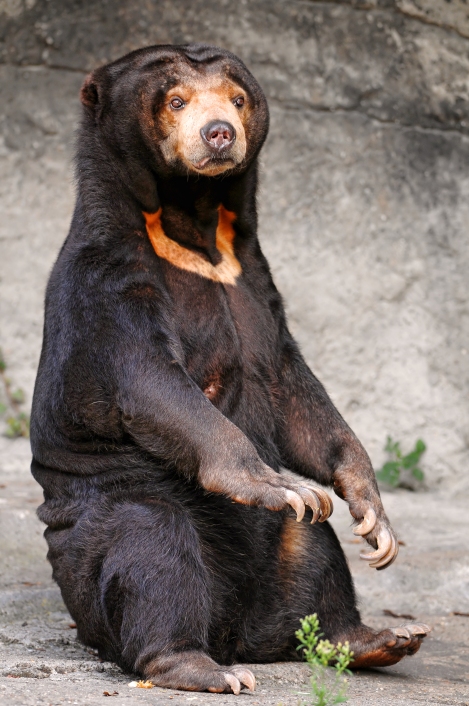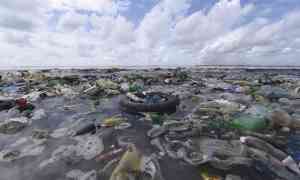
Photo: Tambako the Jaguar
In 2008, pet artist Suzi Chua learned about sun bears from biologist Wong Siew Te, founder of the Bornean Sun Bear Conservation Center (BSBCC) in the Bornean city of Sandakan. Also called honey bears for their love of the sweet stuff, these endangered creatures live throughout South-East Asian tropical rainforests and on the Indonesian islands of Sumatra and Borneo. Chua, who is passionate about animals and volunteers at local animal shelters, was saddened to learn that the adorable bears, the smallest bear species, typically weighing in at 100 pounds or less, are often hunted for their body parts or are poached to be sold as exotic pets.
Thus, she created a project to help save the sun bears: through free art lessons that would teach how to paint sun bears. “I wanted to raise awareness and save the sun bears,” says Chua. To date, she has painted five sun bears at the BSBCC, including Koko, who died in 2015 of respiratory failure and whose portrait has been placed in the organization’s visitor center. Chua donated 30% of sales from three other portraits to BSBCC and just completed her fifth painting of Debbie, a sun bear sent to BSBCC in 2012 after being rescued from captivity as a pet.
Chua’s friend, Stacey Chiew, an art teacher, helps Chua by promoting the “Saving Sun Bears, One Painting At A Time” project to her students, and feels the project will help raise awareness of this sweet, shy, threatened species. “Art can create a powerful voice for sun bears. The main objective of this project is to let the younger generation know that forests are home to the sun bears, not cages,” she says. “The students should know that we have the power to change and destroy habitats, putting sun bears on the ever-increasing endangered species list. More and more young people are waking up to the fact that the choices they make can have an impact on wildlife.”
Adds Chua of the impact on students: “They can also gain a general understanding of how profound the loss would be if we don’t take action now to protect them. One day, we may never see the beautiful sun bears except in a picture book.” On their August 26 art session, they had over 40 students show up to paint Si Kecil (the Little One), a rescued sun bear cub who had been raised by sun bear biologist Gabriela Fredrikkson until he was killed by another sun bear in 2000. They worked from a photo taken by Wong two months before the cub’s death. Wong told Fredrikkson he hoped the photo of Si Kecil would grow famous around the world to shed light on the fate of the sun bears, and Si Kecil has since become the center’s icon. “These paintings will be displayed at BSBCC’s visitor center for public viewing. In future, we may sell or auction some of these paintings during special functions or fund-raising events,” says Wong.
BSBCC currently houses 40 rescued sun bears, the youngest of which is Wawa (a nine-month-old cub) and the oldest of which is Amaco (a 23-year-old sun bear). Sun bear populations throughout South-East Asia, Sabah included, are suffering greatly. Says Wong, “They face tremendous threats from habitat lost across their distribution range. For the sun bears that manage to survive, their survival may be further threatened by poaching for body parts and the pet trade. Recently, the Sabah Wildlife Department prosecuted two separate cases of sun bear poaching within two weeks. These cases raised serious concern for wildlife poaching in the state. In addition, Facebook is being used as a platform for the illegal wildlife trade.”
Wong praises Chua and Chiew for their unique project, which increases the next generation’s awareness of this beautiful endangered species.

Photo: Suzi Chua
Source: Chiew, Marjorie. “Care to paint a bright future for sun bears?” Star2. 16 September 2016.
Wildlife Conservation Film Festival
Biodiversity & Wildlife Crime Conference
Christopher J. Gervais, F.R.G.S.
Founder & CEO
Christopher@WCFF.org
www.WCFF.org
Facebook.com/WCFForg
Twitter: @WCFF_org
Twitter: @CJGERVAIS
Instagram: @wcff_org
Vimeo.com/wcff
dailymotion.com/WCFF1
























